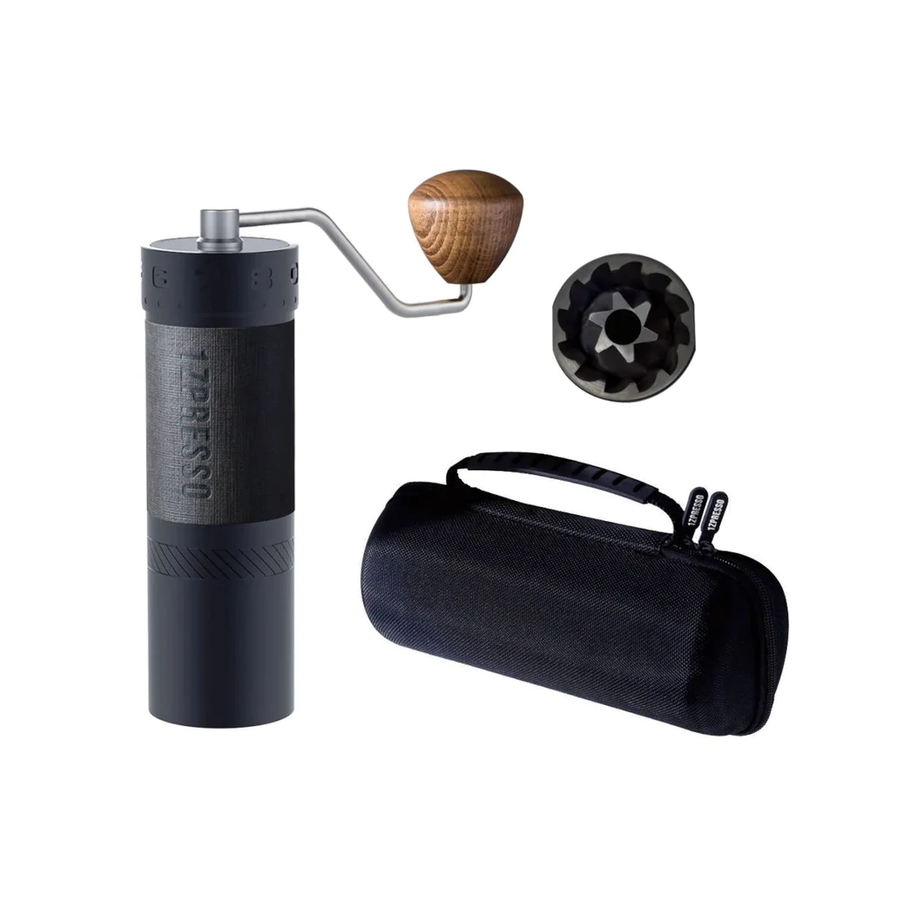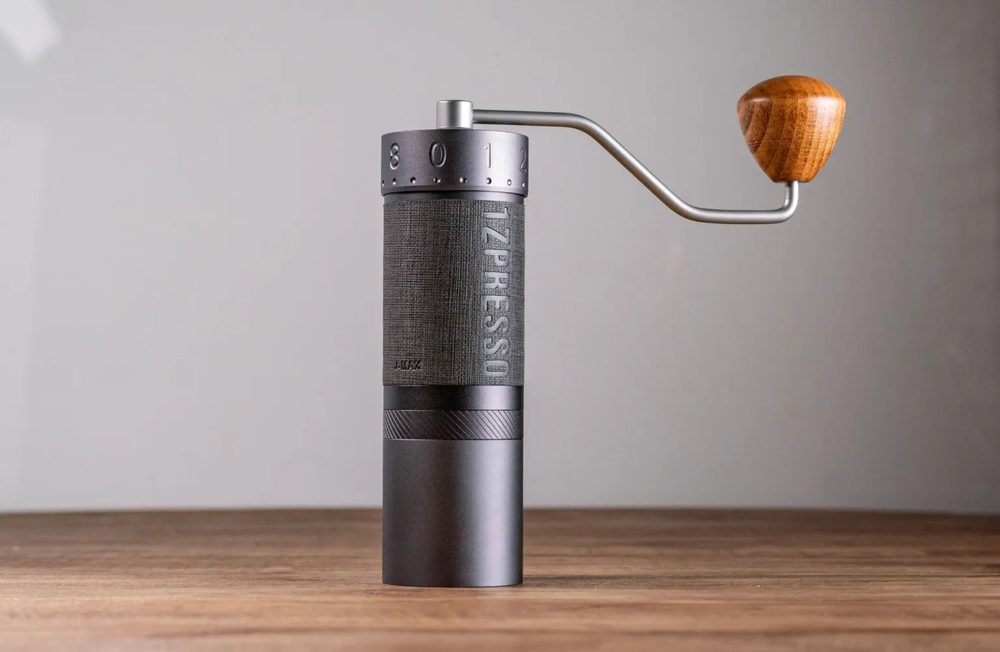The History of the Espresso Machine: From Italy to South African Cafés
Imagine starting your day without that invigorating shot of espresso. It's a scenario many South Africans can't fathom. The espresso machine, a staple in countless homes and cafes across the country, has a rich history that spans over a century. From its humble beginnings in Italy to its widespread adoption in South Africa, the journey of the espresso machine is as fascinating as the brew it produces.
Understanding the evolution of the espresso machine helps you appreciate not just the convenience it offers but also the artistry and innovation behind every cup. Whether you're enjoying a quick shot at a bustling Johannesburg café or savouring a leisurely espresso at home, knowing the story behind your favourite coffee companion adds a new layer of enjoyment to your daily ritual.

Key Takeaways
-
Angelo Moriondo's Innovation: Angelo Moriondo invented the first steam-driven espresso machine in 1884 in Turin, Italy, marking the beginning of the espresso machine's evolution.
-
Early Technological Advancements: Luigi Bezzera and Desiderio Pavoni were pivotal in refining and commercialising espresso machines in the early 20th century, making them popular in Italian cafes.
-
Emergence of Semi-Automatic Machines: Achille Gaggia's introduction of the semi-automatic espresso machine in 1938 provided more consistent pressure and better espresso quality, revolutionising the brewing process.
-
Post-War Innovations: The development of fully automatic espresso machines after World War II further simplified coffee preparation, integrating motorized pumps for precise water pressure and temperature control.
-
Impact on South Africa: The technological advancements in espresso machines significantly influenced South African coffee culture, making high-quality espresso accessible in urban cafes and homes across the country.
-
Modern Availability: Today, South Africans can easily purchase a diverse range of espresso machines online, blending historical innovation with modern convenience to enhance the coffee-drinking experience.
The Origins of Espresso
Espresso's history began in the late 19th century, and it has French and Italian roots. Angelo Moriondo invented the first steam-driven espresso machine in 1884 in Turin, Italy. This machine used steam to push water through coffee grounds, producing a faster brew. However, it was largely overlooked until Luigi Bezzera improved its design in 1901, focusing on efficiency and commercial use.
The evolution of espresso saw significant milestones in the early 20th century, when Desiderio Pavoni bought Bezzera's patent. By 1905, Pavoni began producing the first commercial espresso machines, making them accessible to cafes. These machines, like the La Pavoni, Caterina, and Ideale models, revolutionised coffee culture in Italy.
Manual espresso machines became popular in cafes during the 1920s and 1930s. They required skilled baristas to operate, which contributed to the artistry of espresso making. This tradition continued until the advent of semi-automatic espresso machines in the mid-20th century. Semi-automatic models, introduced by Achille Gaggia in 1938, used a piston-driven mechanism to create higher pressure, resulting in a richer crema and a more consistent brew.
Post World War II, advancements in espresso technology further diversified the market. By the 1960s, automatic espresso machines emerged, taking over much of the manual labour. These machines integrated motorized pumps, enabling precise control over water pressure and temperature. Thus, they made high-quality espresso more accessible to a broader audience, setting the stage for modern espresso machines.
In South Africa, the influence of these innovations began to take hold in the late 20th century. Commercial espresso machines became standard in urban cafes, establishing a robust coffee culture reminiscent of its Italian origins. Today, you can find various types of home and commercial espresso machines available to buy online in South Africa, offering diverse options to suit different preferences. This evolution has profoundly impacted the local market, aligning it with global espresso trends.
Invention of the First Espresso Machine
Angelo Moriondo invented the first steam-driven espresso machine in 1884. This innovation marked a significant milestone in the evolution of espresso, transforming coffee brewing by introducing steam pressure. Designed to produce coffee quickly, Moriondo's machine consisted of a large boiler that heated water and forced it through coffee grounds under high pressure.
The patent for Moriondo's invention, registered in Turin, laid the foundation for subsequent developments in espresso machine history. Though the original design was for bulk brewing, this pioneering technology paved the way for more advanced and user-friendly espresso machines. By 1901, Luigi Bezzera improved Moriondo's model for better commercial use, setting the stage for the modern espresso machines we use today.
The steam-driven invention by Angelo Moriondo was crucial for its time, making coffee preparation faster and more efficient. This leap in technology didn't just benefit Italy; it began influencing international coffee culture, including South Africa's burgeoning espresso scene. With the advent of commercial espresso machines in the early 20th century, South Africa's urban cafes started adopting this new brewing method, enriching the local coffee experience.
Understanding Moriondo's role in developing the first espresso machine helps appreciate the rich history and advancements of devices you see in contemporary South African cafes. His innovation led to the range of manual, semi-automatic, and automatic machines now ubiquitous in both commercial and home settings, from Johannesburg's trendy coffee shops to Capetonian homes. If you're looking to buy espresso machines online in South Africa, it's fascinating to know that the roots of what you're purchasing trace back to Moriondo's groundbreaking invention in 1884.
For additional information and to explore modern espresso machines, visit Buna Coffee, a resourceful site for South African coffee lovers.
The Evolution of Espresso Machines

From Manual to Semi-Automatic Machines
The journey from manual espresso machines to semi-automatic and automatic models highlights significant technological advancements. Initially, manual machines like those pioneered by Desiderio Pavoni in the early 20th century dominated cafes. These machines required precise skill from baristas, as they controlled every aspect of the brewing process.
The late 1930s saw a transformative shift with the invention of the semi-automatic espresso machine by Achille Gaggia. This innovation enabled more consistent pressure through the use of a pump system, easing the workload for baristas and ensuring more uniform espresso quality. Gaggia's advancement made high-quality espresso more accessible and set the stage for the future development of automatic machines.
During the post-World War II era, Faema introduced further advancements. The fully automatic espresso machine featured innovations to simplify the brewing process, offering push-button control and automated water and pressure regulation. This progress greatly influenced coffee culture by making espresso preparation easier and more consistent.
Impact on South African Coffee Culture
In South Africa, these advancements have significantly shaped local coffee culture. The late 20th century marked a period where commercial espresso machines became a staple in trendy urban cafes across Johannesburg and Cape Town. Manual machines, exemplifying the artisanal aspect of coffee making, made way for more efficient semi-automatic and automatic models.
Today's South African homes also benefit from these historical advancements. Modern espresso machines, available for purchase online through platforms like Buna Coffee, allow you to enjoy café-quality espresso right in your kitchen. This diverse range includes manual, semi-automatic, and automatic machines, catering to both traditionalists and those seeking convenience.
Understanding the evolution of espresso machines enriches appreciation for the variety and technological sophistication of the devices now commonplace in cafes and homes across South Africa.
Modern Espresso Machines
Today’s espresso machines offer a perfect blend of tradition and innovation. Whether you’re a coffee connoisseur or just enjoy a good cup, understanding the history behind these machines adds a layer of appreciation to each sip. From Moriondo’s first steam-driven machine to the advanced models available now, the journey of the espresso machine is a testament to human ingenuity and passion for coffee.
In South Africa, this evolution has enriched the local coffee culture, making high-quality espresso accessible to everyone. So next time you brew a shot, remember the rich history that’s brought this beloved beverage to your cup. For those keen on exploring the latest models, Buna Coffee is an excellent resource to find the perfect machine for your needs.
Frequently Asked Questions
What is the significance of the espresso machine in South African culture?
The espresso machine plays a crucial role in South African coffee culture, evolving from a rare luxury to a staple in urban cafés and homes, reflecting global trends.
Who invented the first espresso machine?
Angelo Moriondo invented the first steam-driven espresso machine in 1884, which introduced steam pressure for quicker coffee preparation.
How did Luigi Bezzera and Desiderio Pavoni contribute to espresso machines?
Luigi Bezzera improved the design for commercial use in 1901, and Desiderio Pavoni mass-produced these machines in the early 20th century, revolutionising coffee culture in Italy.
What advancements did Achille Gaggia bring to espresso machines?
Achille Gaggia introduced semi-automatic machines in 1938, enhancing consistency and ease of use in espresso making.
How have espresso machines evolved in South Africa?
South Africa saw the influence of espresso machines in the late 20th century, with modern machines now common in both cafes and homes, making high-quality espresso accessible.
Why is understanding the history of espresso machines important?
Knowing the history enriches the appreciation for both the convenience and the artistry involved in making espresso, enhancing the overall coffee experience.
Where can I learn more about modern espresso machines in South Africa?
For more information about modern espresso machines and to purchase one, visit Buna Coffee, a resourceful site for South African coffee lovers.



